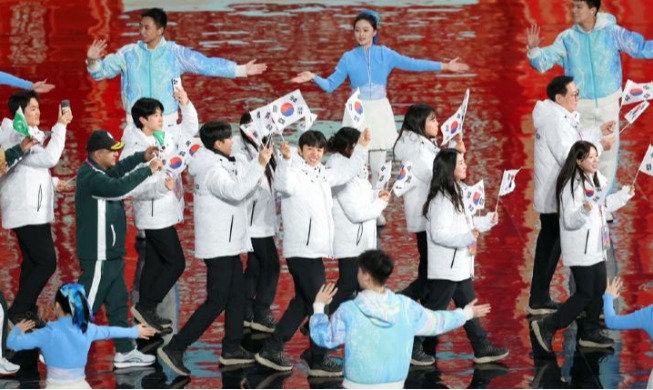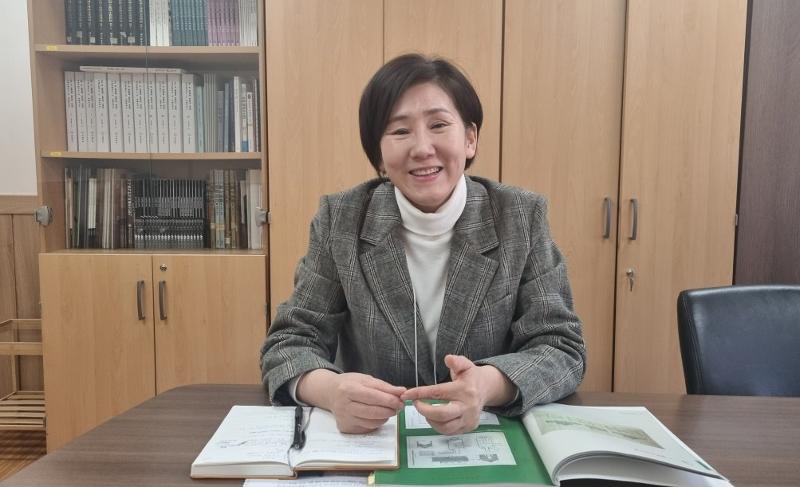
Lee Jin Hee is the director of Seodaemun Prison History Hall in Seoul's Seodaemun-gu District. (Seodaemun Prison History Hall)
By Lee Jihae
March 1, 1919, was when the Korean people led a non-violent movement to demand liberation from Japanese colonial rule of the Korean Peninsula and announce to the world the nation's desire for independence.
The March First Independence Movement ignited the flames of the campaign through actions like the launch of the Korean Provisional Government and Korean Liberation Army. It also inspired in the same year the May Fourth Movement in China, a non-violent initiative against British rule in India, and pro-independence movements in Vietnam, the Philippines and Egypt.
Ahead of the movement's 106th anniversary, Korea.net on Feb. 13 interviewed Lee Jin Hee, director of Seodamun Prison History Hall, at her institution on the history and significance of the March 1 movement.
What kind of place is Seodaemun Prison History Hall?
Seodaemun Prison History Hall was built by imperial Japan as a modern prison, opened in 1908 and used as a prison until its closure in 1987. This historical site was where many independence activists were incarcerated during Japanese colonial rule as well as many pro-democracy activists after liberation.
In 1967, the prison's name was changed to Seoul Detention Center. After its relocation in 1987 to Uiwang, Gyeonggi-Province, the prison faced complete demolition given its reputation as a hateful place. But the descendants of independence and democracy activists strongly opposed it, so only parts were torn down. Later, sections of the demolished areas were turned into a park, and the facility opened on Nov. 5, 1998, as Seodaemun Prison History Hall. Today, it's been completely transformed into a site of historical education that annually attracts 600,000 visitors.
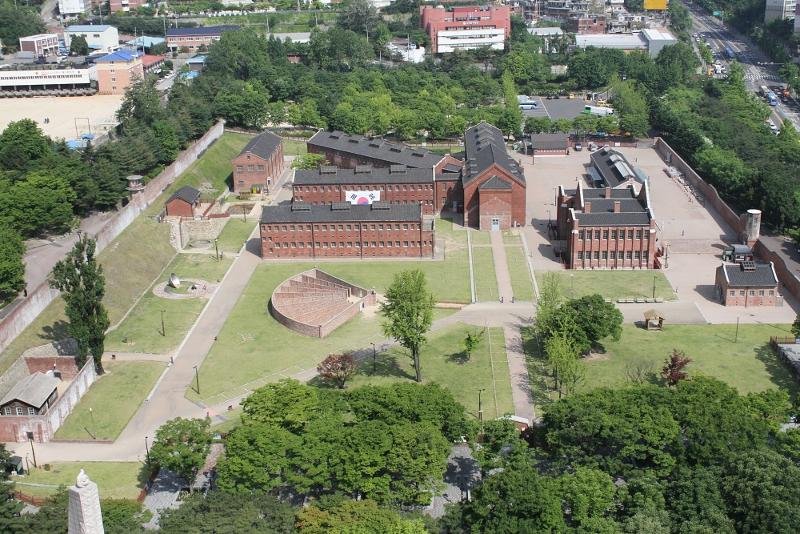
Seodaemun Prison History Hall is located in Seoul's Seodaemun-gu District. (Seodaemun Prison History Hall)
What leading activists were detained here and how does this venue tell their stories?
They include Kim Gu (Koo), premier of the Korean Provisional Government (KPG), in the early 1910s; Yu Gwan-sun, who led a pro-independence rally at Aunae, (a market in Cheonan, Chungcheongnam-do Province), from 1919-20; Ahn Chang Ho, who was active in the U.S. and the KPG (paroled in 1937 and died the following year); and Yeo Un-hyeong, who chaired the preparatory committee for national foundation after liberation.
But Seodaemun Prison History Hall organizes its exhibitions around events rather than specific individuals because the independence movement was achieved not through the efforts of a few heroic people but the dedication of numerous unnamed activists.
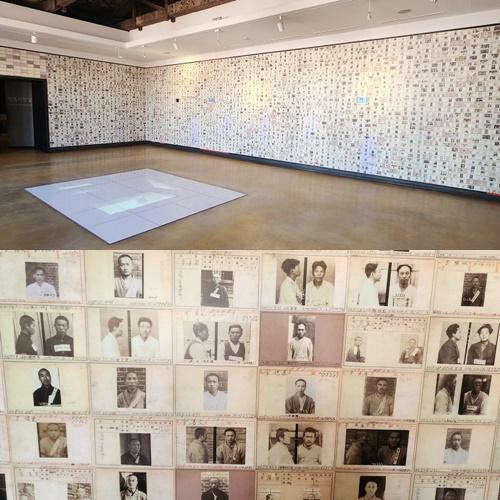
A wall at Seodaemun Prison History Hall (top photo) is covered with the mugshots of independence activists imprisoned there, with a close-up show in the bottom photo. (Lee Jihae)
What incident or individual has especially inspired you at the hall and why?
Countless independence activists were detained here after the March First Independence Movement. Many were tortured here or died after being tortured.
I heard imprisoned pregnant women released on bail to give birth but detained again. Some even spent a year in prison with their newborns. I found it moving that despite being in an unsanitary prison with a harsh environment, other inmates helped these women by washing diapers, sharing food and helping one another.
There were also elderly activists like Kang Woo-kyu. Despite his advanced age of 64, he tried to assassinate in 1919 Makoto Saito, governor-general of Korea, by throwing a grenade. Kang was subsequently imprisoned here and hanged in 1920. His courage still deeply resonates today.
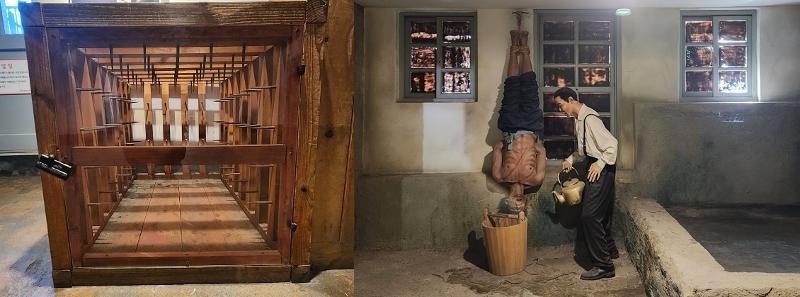
On the left is a replica of a torture box with nails in which an inmate was placed and shaken to inflict pain. On the right is a water torture in which a prisoner's head was forced into a tub of water or water was poured into their noses and mouth to make breathing difficult. (Lee Jihae)
What is the facility's message to visitors, especially to those from abroad?
A saying goes that a nation that forgets history has no future. We must remember the past and learn from it. We must remember this prison not merely as a prison but a site of fighting for freedom.
To foreign visitors, I stress how Korea fought for liberation from Japanese colonial rule and how the sacrifices of independence activists affected the development of the country's modern democracy and human rights.
What events has the facility prepared to mark the movement's 106th anniversary?
We've prepared many events to mark the 106th anniversary of the movement like a memorial service for patriotic martyrs, reenactments of the historic march, readings of the country's Declaration of Independence and performances. Admission is free from March 1-2.
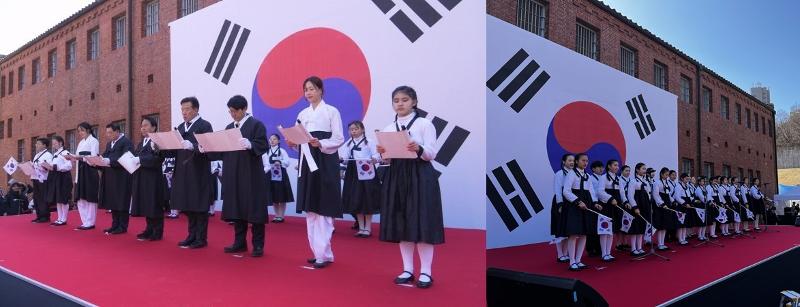
On the left is a scene from Seodaemun Prison History Hall on March 1, 2024, at the reading of the country's Declaration of Independence and on the right is a children's performance held on the same day. (Seodaemun Prison History Hall)
How do you feel about Japanese politicians and scholars claiming Dokdo Island as Japan's and distortion of history, as well as Tokyo's broken pledges after UNESCO's designation of Hashima Island as World Heritage in 2015?
We must rectify actions that distort historical truth. On the Dokdo issue, Korea must rationally respond with evidence based on historical grounds and international law. Systematic research and promotion are more important than emotional responses.
The Japanese government has broken its pledge to raise awareness of Koreans forced to work on Hashima Island in the process of UNESCO designating the island as World Heritage in 2015. Its failure to take follow-up measures is a matter of the international community's trust. Through international organizations and multilateral diplomacy, we must continue our efforts to inform the world of the historical truth.
These historical matters are not merely conflict between the two countries. Efforts to correct history seek to protect universal values such as human rights and peace. Thus systematic responses are necessary like global academic research and provision of promotional resources in multiple languages.
Given Korea's higher cooperation with Japan in economy, military and diplomacy, how do you think history issues should be dealt with?
History issues remain one of the most sensitive matters in relations with Japan. Even with stronger cooperation, a conflict can erupt at any time if such issues are left unresolved. So we must maintain practical cooperation but also efforts to solve history issues. Ultimately, we must uphold the principle of cooperation but not give up on resolving history issues.
Any concluding message to Korea.net readers?
Seodaemun Prison History Hall is an important space that preserves the history of the Korean independence movement and informs the world about it. We request the public's continued interest and visits so that many foreign visitors come to directly feel and experience the spirit of independence activists.
[email protected]
Most popular
- Is archive and document restoration the next big thing in Hallyu?
- Stricter rules for battery packs on flights coming next month
- 'Parasite' director returns with humanistic sci-fi film 'Mickey 17'
- aespa, BLACKPINK's Jennie win Billboard Women in Music Awards
- US critics name 'Squid Game' S2 best foreign language series
